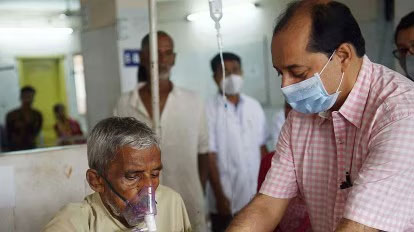NEW DELHI, Mar 28
The gap between the estimated number and actual cases of tuberculosis (TB) is closing, according to the India TB Report 2024 released by the Union Health ministry on Wednesday. This is an important marker as the “missing cases” are assumed to not have received treatment, continuing to spread the infection to others.
There were only 2.3 lakh missing cases in 2023, as compared to 3.2 lakh the year before, the report states. This gap has been reducing over the years, especially with the government’s Ni-kshay portal tracking all TB patients. According to the report, the majority of the TB cases are still reported by the government health centres, even as there has been an uptick in notifications by the private sector. Nearly 33% or 8.4 lakh of the 25.5 lakh cases reported in 2023 came from the private sector. To compare, only 1.9 lakh cases were reported by the private sector in 2015, the year considered to be the baseline by the programme that is geared towards the elimination of the disease. The estimated incidence of TB in 2023 increased slightly to 27.8 lakh from the previous year’s estimate of 27.4 lakh. The mortality due to the infection remained the same at 3.2 lakh as per the data.
These estimates are based on a new methodology that India developed and has since been accepted by the World Health Organisation. TB cases in India over the years TB cases in India over the years Last year, when the in-country model was used to estimate the number of cases and deaths due to tuberculosis, there was a sudden drop in the mortality figures seen in the global report released by the WHO.
India’s TB mortality dropped from 4.94 lakhs in 2021 to 3.31 lakhs in 2022. The number of cases reported in a year also went down from 29.4 lakh in 2021 as per the previous method to 27.4 lakh in 2022, according to the data. The report shows that India reached its 2023 target of initiating treatment in 95% of patients diagnosed with the infection.
It says 58% of those diagnosed were offered a test to check whether their infection was resistant to the first line drugs, an increase from 25% in 2015. The programme recommends drug susceptibility treatment to ensure that people who may have drug resistant TB are able to access e therapies from the get go instead of being treated with the first-line therapy initially.



























